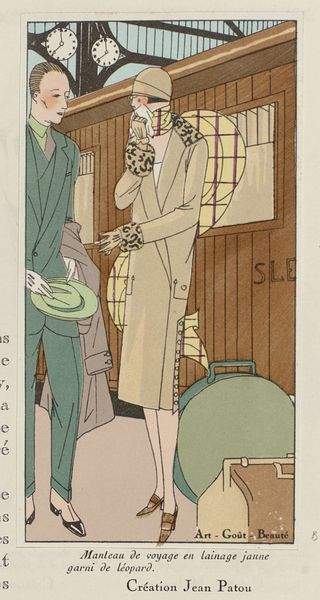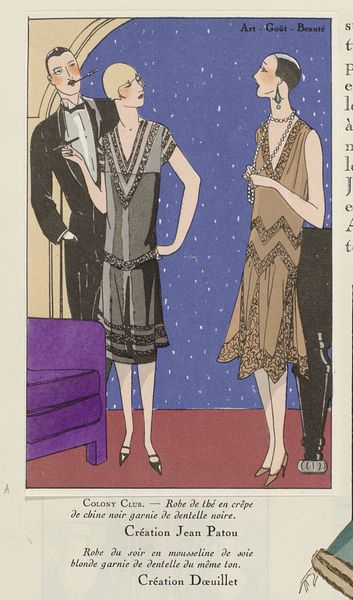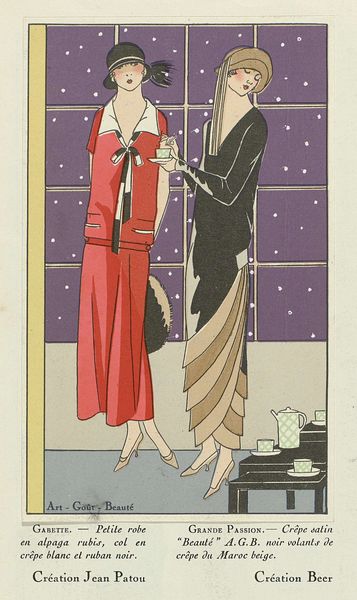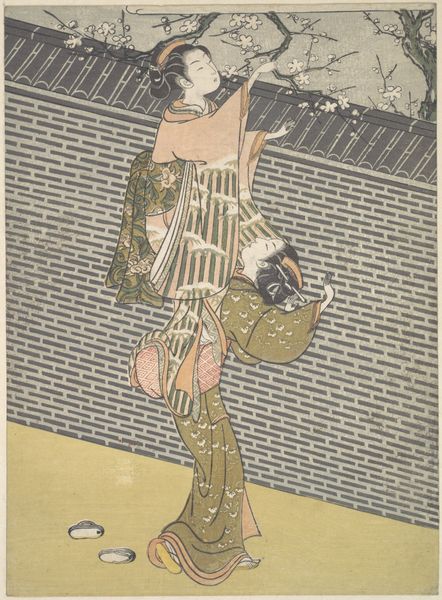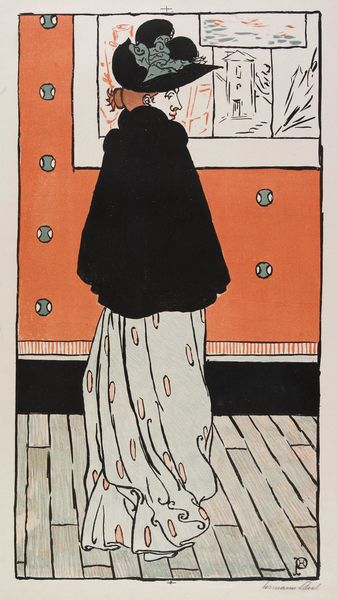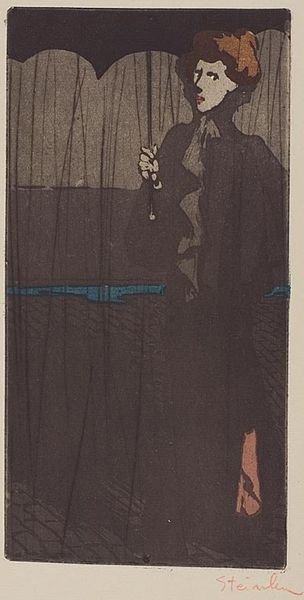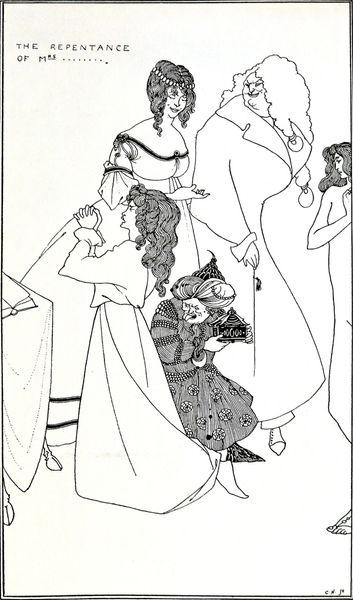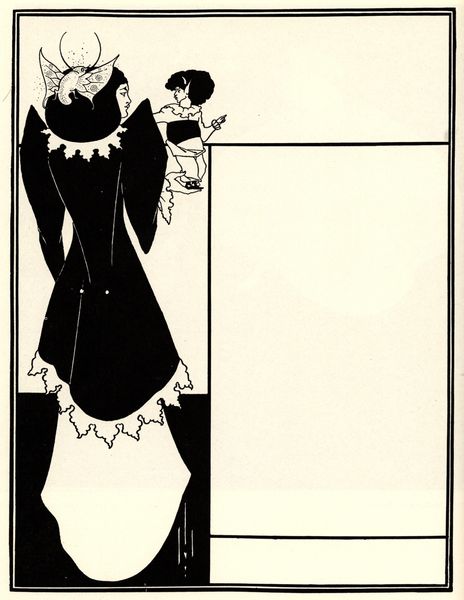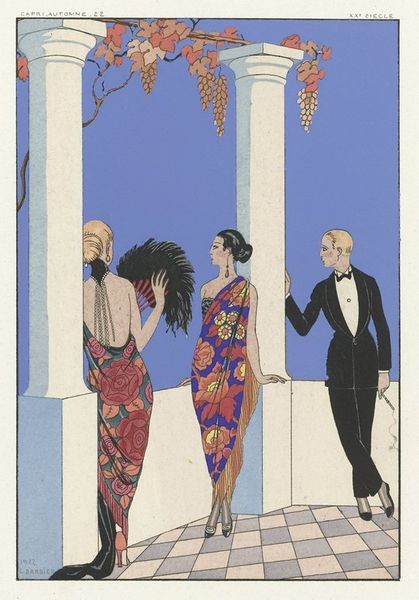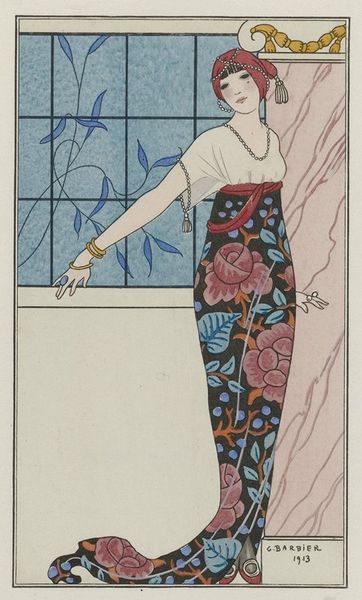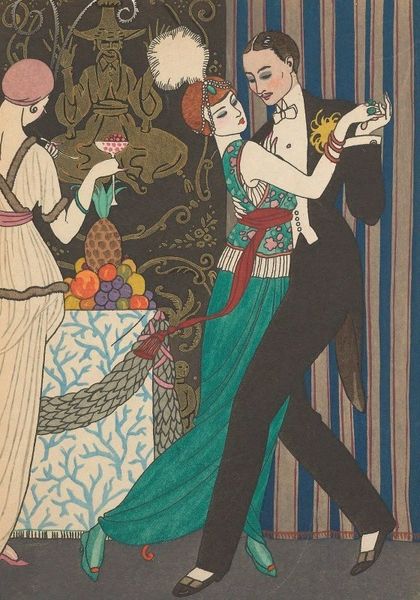
Art - Goût - Beauté, Feuillets de l' élégance féminine, Février 1926, No. 66, 6e Année, p. 12: Création Premet / Création Doeuillet 1926
0:00
0:00
#
portrait
#
art-deco
#
comic strip
# print
#
traditional media
#
figuration
#
decorative-art
#
dress
Dimensions: height mm, width mm
Copyright: Rijks Museum: Open Domain
Curator: This is a print from "Art-Goût-Beauté," a page from a 1926 issue showcasing the elegance of feminine fashion during that era. It presents creations by Premet and Doeuillet. Editor: My first impression is that it evokes a mood of sophisticated leisure. The composition, with its elegant figures, suggests a particular vision of female identity, both glamorous and subtly rebellious. Curator: Absolutely. And consider the context: this appeared during a time when women were actively renegotiating social norms and gender expectations. The figures are holding cigarettes. It’s representative of new liberties taken with representations of women in visual culture. The figure in gray is attired in the "Mirliton" design. Editor: That’s right. This illustration's emphasis on textiles is key. I am curious about the production involved, since we know this was part of a monthly periodical of "feminine elegance". Consider the layering of meaning between labor and consumption with dresses created from crepe de chine and silk mousseline. It poses a question of accessibility versus aspiration. Curator: Precisely. The styling choices certainly emphasize a form of material wealth that, in some ways, excluded a certain group of the population at the time. Editor: Well, the design itself presents us with clear intention of visual seduction, and it's rendered using techniques to communicate very clear instructions for what can only be assumed was upper middle class clientele. The use of color lithography, too, allowed for these designs to be shared very widely at a reasonable cost. Curator: I think what is truly significant here is how these kinds of publications shaped perceptions of the ideal modern woman during this period, further reinforcing the intersections of gender, class, and artistic expression. Editor: It provides insight into the intricate relationships between creative processes, manufactured commodities, and the daily experiences of consumption. I keep coming back to what it means to put an economic framework onto "beauty" through clothing during the 20's. Curator: Looking closely at the cultural context, and thinking of labor, class and accessibility, these works are an important study for anyone who is hoping to gain an understanding of the modern woman during the beginning of the twentieth century. Editor: Absolutely, examining its composition gives a tangible understanding of art deco illustration from that era!
Comments
No comments
Be the first to comment and join the conversation on the ultimate creative platform.
